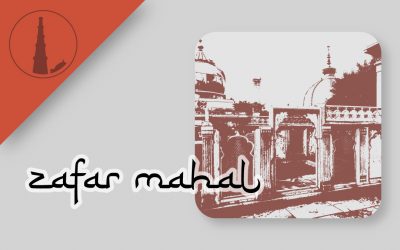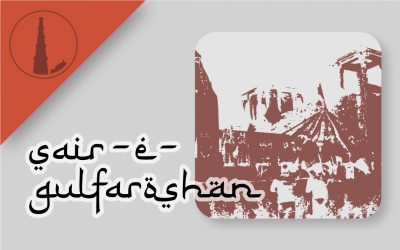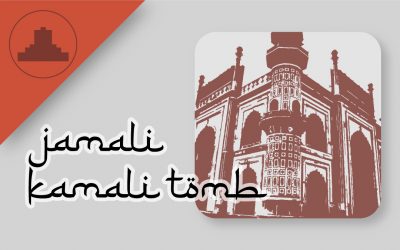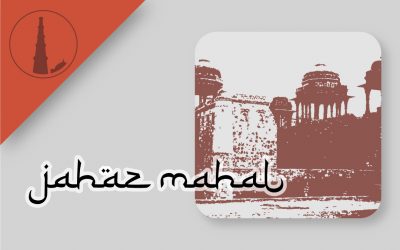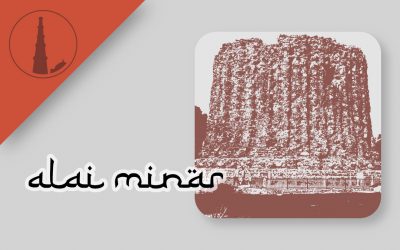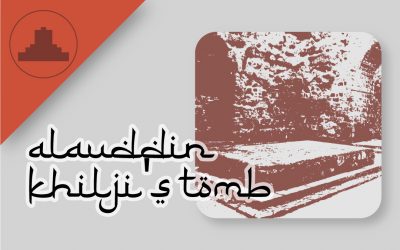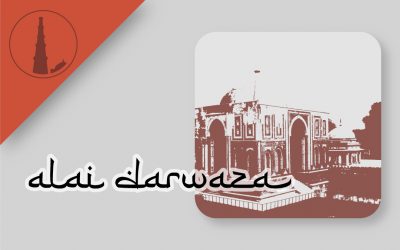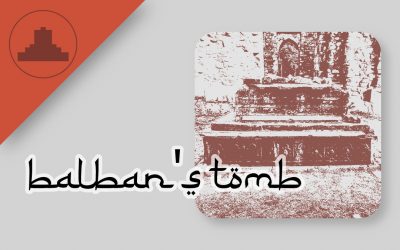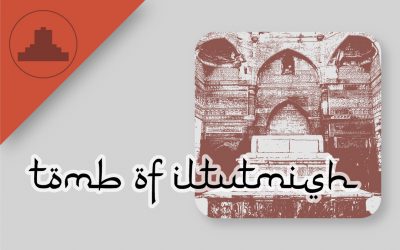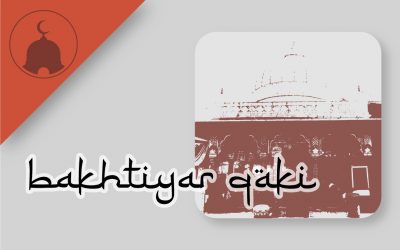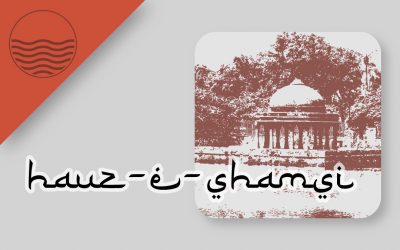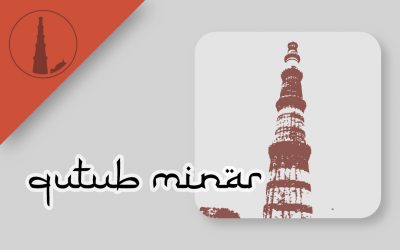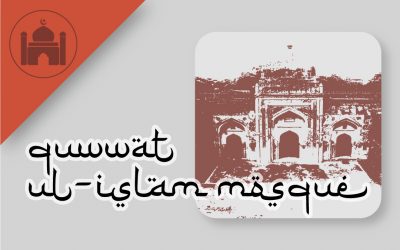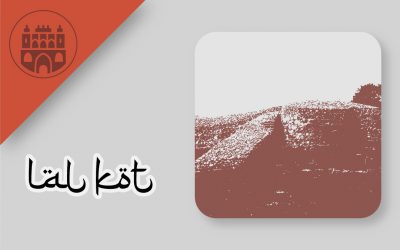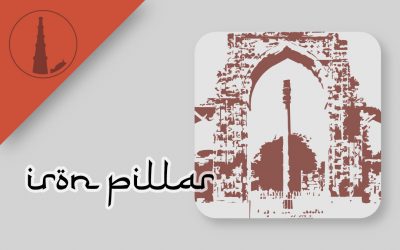mehrauli
mehrauli was one of the first cities that flourished in the region of delhi. It was from here that the tomars, chauhans and later the delhi sultans established their rule. the strategic geo-location of mehrauli, on a ridge, provided much needed security, efficient water supply and good drainage due to the sloping landform. the entire area has a substantial count of sufi shrines, historic houses, sarais and secular buildings, still surviving.
there exist different theories explaining as to why the area was called ‘mehrauli’. one such theory is that it was originally ‘mihirwali’ named after the king of gujarat pratihara dynasty, raja mihir bhoja (836-885 C.E.). others are of the opinion that it is called mehrauli because of the ‘meher’ or blessings of the saint khwaja qutubuddin bakhtiyar qaki whose dargah is located in this region.
mehrauli, in reality, is the actual ‘old delhi’ or ‘purani dilli’ and not shahjahanabad which is a popular conceived notion. It also has ‘lal kot’ literally meaning the red fort. What we today know as red fort located in shahjahanabad was originally called ‘qila –e-mubarak’ or the ‘Auspicious Fort’.
references:
1. safvi, rana. “where stones speak: historical trails in mehrauli, the first city of delhi”. harper collins. 2015. Pg. no. 21

zafar mahal
Umr-e-daraaz mang ke layi thi chaar din Do aarzu mein kat gayi do intezaar mein- Seemab Akbarbadi, Kitna hai bad-nasib ‘Zafar’ dafn ke liye Do gaz zamin bhi na mil ku-e-yar mein- Bahadur Shah Zafar Narrative The first two lines written by Seemab Akbarbadi however, are...
dilkhusha
Narrative Another house that belonged to Sir Thomas Metcalfe, the fourth Baronet, is named Dilkhusha ‘Delight of the Heart’ and is located in Mehrauli. It is originally the tomb of Quli Khan, the brother of Adham Khan and foster brother of Emperor Akbar. The tomb is...
phoolwalon ki Sair/ Sair-e- gulfaroshan
abhī zinda hai maañ merī mujhe kuchh bhī nahīñ hogā maiñ ghar se jab nikaltā huuñ duā bhī saath chaltī hai- Munawwar Rana Narrative The origin of Phoolwalon ki Sair lies in an interesting story. The younger and favourite son of Akbar Shah II got into conflict with the...
jamali kamali mosque and tomb
Narrative Jamali Kamali mosque and tomb belongs to Shaikh Fazlullah or Jalal Khan, better known by his alias ‘Jamali’. He was a 16th century mystic, traveller and poet who lived through the times of Sikander Lodhi, Babur and Humayun. His popular works include ‘The Sun...
jahaz mahal
vo aks ban ke mirī chashm-e-tar meñ rahtā hai ajiib shaḳhs hai paanī ke ghar meñ rahtā hai –Bismil Sabri Narrative The Jahaz Mahal, located on the north-eastern corner of Hauz-i-Shamsi, was built during the Lodhi period. The Jahaz Mahal or Ship Palace was so named as...
alai minar
Yaha kisi ko bhi kuch hasb-e-arzu na mila Kisi ko hum na mile aur hum ko tu na mila – Zafar Iqbal Narrative Alauddin Khilji wanted to immortalise himself by constructing a magnificent structure, both in terms of size and style. However, little did he realise...
alauddin khilji’s tomb and madrassa
Mati kahe kumhar se, tuu kya roundhe mohee. ek din aisa aayenga, main roundhoo toye. Aaye hain te jaayenge, raajaa, runk, phakeer. ek singhasan, chadhi chale, ek bandhe zanjeer. Clay says to the potter, “Today, you are moulding me... ...such a day will come when, I...
alai darwaza
āsmāñ itnī bulandī pe jo itrātā hai bhuul jaatā hai zamīñ se hī nazar aatā hai - Waseem Barelvi Narrative Constructed by Alauddin Khilji in1311 C.E., the Alai Darwaza is the only remaining gateway out of the four that provided entrance to Alauddin Khilji’s extension...
balban’s tomb
kabhī kisī ko mukammal jahāñ nahīñ miltā kahīñ zamīn kahīñ āsmāñ nahīñ miltā – Nida Fazli Narrative The tomb belongs to Ghiyasuddin Balban of the Mamluk (slave) dynasty who ruled from 1266-1287 C.E. Balban was one of the Turki slave of Shamsuddin Iltutmish and also...
tomb of Iltutmish
woh sufi ke the khidmat e haq mein mard, mohabbat mein yakta hamiyat mein fard he was a mystic, in the service of god, unique in his love and humility of his soul - allma iqbal Narrative Sultan Shams-ud-din Iltutmish of the Mamluk (slave) dynasty, who ruled from...
dargah of qutubuddin bakhtiyar qaki
mun cheh goyam hust too khawja mueen, abd-e khud ra qutb-e dowraan kardah ee o khawaja mueen! Mine are only the (vain) words, but you embody the reality . . . (as) you have elevated your slave to the axial saint (qutb) of this age. Narrative These are words from a...
hauz-e-shamsi
मंिजल िमली मुराद िमली मुद्दा िमला, सब कुछ मुझे िमला जो तेरा नक्श-ए-पा िमला My prayers have been answered, I found my destination I received everything, when I found the imprint of thy feet - Seemab Akbarabadi Narrative Buraq, the steed that took the prophet to...
qutub minar
dillī terī aañkh meñ tinkā ''qutub-mīnār'' - Mohammad Alvi Narrative Qutub Minar, meaning the axis or pole of islam, is amongst the main tourist attractions of Delhi. The minaret is also adorned by beautiful calligraphy on stone. Built to assert the supremacy,...
quwwat-ul islam mosque
hogi iss dher imaarat ki kahaani kuch tau, dhundh alfaz ke malbe mein maa’ini kuchh tau Surely a story hides behind these ruins, somewhere. Search the debris of words, the meaning is there somewhere - sharper rasool Narrative Qutub-ud-din Aibak, a slave born in...
qila rai pithora
mit gaye ban ke qasr o mahal, naam ko ek laa-makaan baaqi raha as specks of dust in the wind, palaces and forts were swept away. only he, who needs no dwelling remains and will remain always - zaheer dehlvi Narrative Known as the last Hindu ruler of Delhi, Prithvi Raj...
lal Kot
darwaje sar phod rahe hain, kaun iss ghar ko chod gaye hain Tthe doors are banging their heads, who has left his house like this - Nasir Kazmi narrative The ‘lal kot’ palace is historically the first “fortification” of Delhi”. King Anangapal Tomara is credited to have...
iron Pillar, Qutub Complex, Mehrauli
killi tau dhilli bhayi, tomar bhayaa mat hiin the pillar become loose, the tomar’s wish will not be fulfilled. Narrative The Iron Pillar at Mehrauli dated at circa 5th century C.E. mentions a king name Chandra, who probably is identified with Chandragupta II of the...

